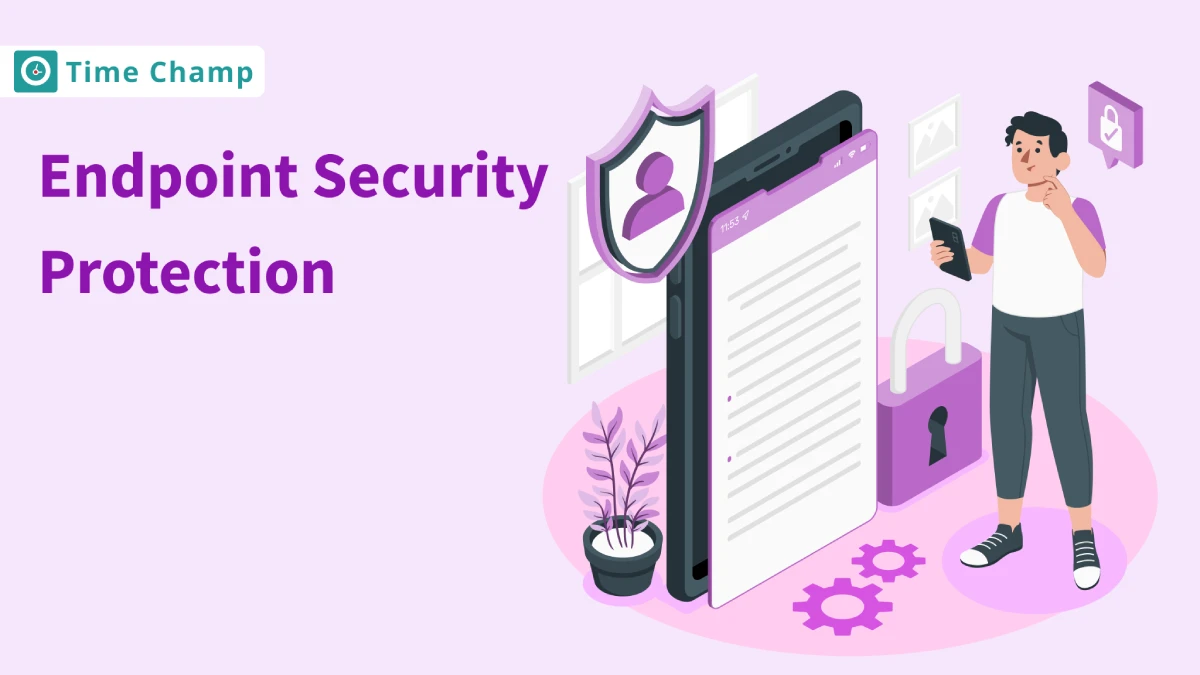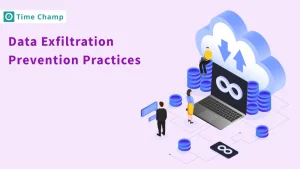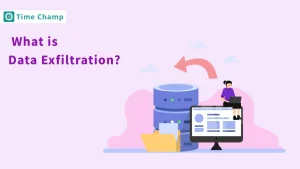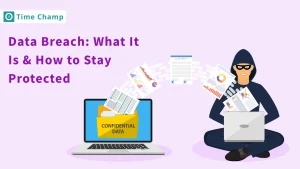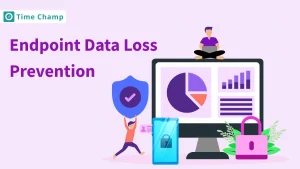It’s always less, no matter how much we talk about data protection. Endpoint security protection. This digital world holds the power to drive innovation but also opens doors to unforeseen threats.
Endpoint protection comes in the frontline of defense against evolving threats.
In this guide, we will discuss what endpoint security protection is, how it works, core features, best practices, and some comparisons to other security solutions, which is basically everything you need to know.
What is Endpoint Security?
Endpoint security protects devices that connect to a network from cyber threats. These devices, known as endpoints, include desktops, laptops, smartphones, and servers. By securing these access points, endpoint security helps prevent malware, unauthorized access, and data breaches, ensuring the safety and integrity of the organization’s network.
What’s Considered as Endpoint?
Before jumping into the topic, make you understand what endpoints are to get a clear view of what we are going to discuss about.
So, an endpoint refers to any device that connects to a network.
This includes:
- Laptops
- Desktops
- Smartphones
- Tablets
- Internet of Things (IoT) devices
These are access points that are usually vulnerable to cyber threats so, their protection becomes important.
Why Endpoint Security is Crucial
Endpoints are the front-line defense in any organization’s cybersecurity. The devices like laptops, smartphones, and even IoT devices are the access points to your network, and with more people working remotely, they’re becoming easier targets for cybercriminals.
If any negligence happens in the protection, even a single device can open the door to uninformed data breaches, financial losses, and damage to your company’s reputation.
So, endpoint security is crucial to prevent these risks by safeguarding sensitive data, addressing vulnerabilities, and ensuring everything keeps running smoothly. It’s about taking action before a breach happens.
Do You Know?
Reports show that 70% of security breaches originate from endpoint devices.
Benefits of Endpoint Security
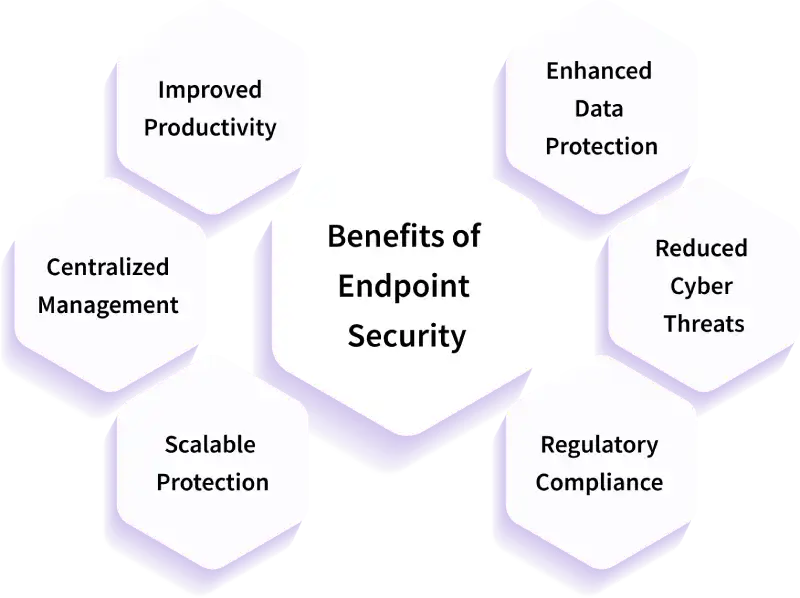
1. Enhanced Data Protection
With endpoint protection, your sensitive data is always protected. It keeps unauthorized users out, encrypts important files, and ensures that even if a device is lost or stolen, your information stays safe and secure.
2. Reduced Cyber Threats
Cyber threats like malware, ransomware, and phishing are becoming more common. Endpoint protection helps spot and block these risks in real time, so they can’t cause any damage to your systems.
3. Regulatory Compliance
Many industries have strict rules about data protection, such as GDPR or HIPAA. Endpoint security helps you meet these regulations, so you avoid penalties and keep your customers’ trust intact.
4. Improved Productivity
Cyber attacks can result in loss of time and money. By stopping these threats upfront, endpoint protection ensures your business stays up and running, allowing your team to stay focussed on what really matters without any interruptions.
5. Centralized Management
Endpoint protection allows your IT team to manage all devices from one place. This makes it easy to deploy updates, handle security patches, and respond quickly to any threats, keeping everything simple and streamlined.
6. Scalable Protection
Whether you’re a small startup or a large enterprise, endpoint protection grows with you. As your organization adds more devices, you can be confident they’re all protected against the latest threats.
How Does Endpoint Security Work?
Endpoint security works by protecting the devices that connect to your network, ensuring they don’t become weak spots for cyber threats. It combines various tools and technologies to detect, prevent, and respond to attacks in real time.
Here’s an insightful look into how it performs:
- Device Monitoring: Endpoint protection watches your devices for any unusual behavior, helping you spot things like malware or unauthorized access before they have a chance to do real damage.
- Threat Prevention: Endpoint security prevents threats like malware and hacking attempts by using tools such as antivirus, firewalls, and intrusion detection systems. It stops potential damage before it even starts.
- Data Encryption: Encryption locks sensitive information so even if someone gets in, they can’t use your data.
- Access Control: Ensures that only verified users and trusted devices can access the network.
- Centralized Management: IT departments use one system to secure all devices, so there is no issue with updates and fixes.
Endpoint security works like a protective shield for all the devices connected to your network. It helps block threats, lowers the risk of data breaches, and keeps your information safe.
Core Features of Effective Endpoint Security Solutions
A good endpoint security solution is more than just a safety net, it’s about staying ahead of potential threats and simplifying how you protect your devices. Here’s what makes a solution truly effective.
- Advanced Threat Detection and Prevention: Help you stop malware and ransomware before they can do any damage, keeping your data safe.
- Endpoint Detection and Response (EDR): Keeps track of your devices, flags anything unusual, and helps you respond quickly to prevent problems.
- Multi-Layered Security Approach: Adds extra protection by using multiple tools like antivirus and firewalls to guard your network.
- Device and Application Control: Limits what devices and apps can access your network, cutting down on unnecessary risks.
- Data Encryption: Locks down your sensitive information, ensuring only the right people can see it.
- Automated Patch Management: Keeps your systems updated automatically so hackers can’t take advantage of outdated software.
- Cloud-Based Management: This makes it easy to manage and monitor all your devices, no matter where you’re working from.
- Identity and Access Management (IAM): Makes sure only trusted users can get into your system, giving you peace of mind and better control.
- Behavioral Analytics: Watches for unusual behavior to catch threats early, even before they cause harm.
- Comprehensive Reporting and Analytics: Gives you a clear picture of your security status so you can stay one step ahead of problems.
Find an endpoint security solution for your company that comes with all these core features and more to keep your devices safe, and secure. Let your team focus on their tasks with peace of mind.
Best Practices for Endpoint Security Implementation
Protecting your endpoints doesn’t have to feel like a daunting task. With these straightforward steps, you can safeguard your network and keep cyber threats away.
1. Track & Monitor All the Devices on a Network
Map out every device connected to your network, from laptops and smartphones to IoT gadgets. By keeping tabs on these devices, you’ll know exactly what’s accessing your system and can quickly spot anything unusual.
2. Secure Endpoint Access
Think of this as locking the front door to your digital world. By using multi-factor authentication, setting strong passwords, and controlling access, you make sure only trusted people and devices can enter your network. It’s a simple step that keeps unwanted visitors out.
3. Scan Endpoints Frequently Using EDR
Endpoint Detection and Response (EDR) tools are like your security cameras, always on the lookout for anything suspicious. Regular scans catch potential threats early so you can take action before they cause trouble.
4. Install All Updates, Patches, and Software
Don’t give hackers an easy way in. Regularly updating your systems, installing patches, and keeping software up-to-date ensures your defenses stay strong. It’s one of the easiest ways to block vulnerabilities from becoming problems.
5. Use Encryption for Remote Endpoints
If your team works remotely, encryption is a must. It is essential to lock down your company’s sensitive data. Encryption ensures that even if someone intercepts your data, it’s unreadable and unusable, keeping your information safe from prying eyes.
6. Create BYOD Policies
Personal devices are good for flexibility and are very cost-effective but most risky when it comes to security and data breaches. Establish clear BYOD policies for employees bringing their own devices to work, like implementing the use of security apps or limiting what data they can access. It’s a simple way to balance convenience with safety.
7. Implement a Zero-Trust Policy
Gut feeling is a thing, and it can hint you towards things at times, but never just assume anything, implement a zero-trust policy. With zero trust, everyone and everything connecting to your network has to prove they’re safe, no matter how trusted they seem.
8. Set Up Post-Breach Protocols
Even the best security measures cannot protect you sometimes and fall into a breach. Having a well-thought-out response plan in place lets you act fast to contain the problem, minimize damage, and recover smoothly. It’s your protective shield for unexpected challenges.
Additional Tips for Extra Protection
- Educate Your Team: People are often the first line of defense. Teach them to spot phishing scams, use strong passwords, and handle sensitive data carefully.
- Regular Security Audits: Check your defenses regularly. Audits help you find weaknesses and fix them before hackers can exploit them.
- Network Segmentation: Divide your network into smaller parts. If one section is compromised, it won’t take down everything else.
- Back-Up Your Data: Always have backups ready. If a breach or failure happens, you’ll be able to recover your information without breaking a sweat.
- Schedule a Cybersecurity Audit: A thorough cybersecurity audit evaluates your entire system’s defences and ensures compliance with security standards helping you stay ahead of emerging threats.
Endpoint Security Solutions vs Other Security Technologies?
Endpoint Security vs. Network Security
Network security is like building a fortress around your digital environment, it protects the entire system from external threats. Endpoint protection takes a closer look, focusing on individual devices like laptops, tablets, and smartphones. While network security shields the big picture, endpoint protection ensures every device inside that system stays secure. Altogether, they provide high protection both for the overall network and the specific devices included in it.
Endpoint Security vs. Antivirus Software
Antivirus software is great at spotting and removing common threats like viruses or malware, but it’s a bit like having a single guard at the gate. Endpoint security takes things to the next level. It actively monitors devices for unusual activity, manages updates to prevent vulnerabilities, encrypts sensitive data, and provides advanced protection against evolving risks. If antivirus is your first line of defense, endpoint protection is the full protective strategy, giving you a comprehensive shield against today’s sophisticated risks.
Conclusion
In conclusion, cyber threats are everywhere, your only option is to protect everything you can to prevent huge data and money loss. Endpoint security protection is more critical than ever, by implementing robust strategies, using cutting-edge tools, and following best practices, you’re not just protecting your data but ensuring business continuity, building customer trust, and staying ahead of the potential risks.
Remember, cybersecurity isn’t a one-time fix. It’s a constant effort to be active, alert, and prepared against all kinds of data threats.
So, take the next step, strengthen your defenses, and empower your team to work securely and confidently in this connected world.
Your digital safety starts at the endpoints. Make it a priority today.
Frequently Asked Questions
Endpoint security is like a digital protective shield for your devices. It prevents your business from data threats such as malware, ransomware, fake E-mail scams, and unauthenticated user logins. It also helps guard against zero-day exploits and insider threats while addressing weak spots like outdated software or unsecured devices.
Think of firewalls as the network’s border patrol, filtering traffic in and out. Endpoint protection, however, protects the devices within that border like your laptops and smartphones. Together, they address both the broader aspects and the intricate details of cybersecurity.
Endpoint protection focuses on protecting your devices from threats, while endpoint management is about keeping them up-to-date and running smoothly. It’s like the difference between locking your door (security) and maintaining the house (management). Both are essential to creating a safe and efficient digital environment.
Endpoint protection is indeed a worthy solution against insider threats. It keeps an eye on device activity, enforces strict access controls, and spots unusual behavior. Whether it’s a mistake or something more intentional, endpoint protection helps you catch issues before they escalate.
Definitely! Most endpoint protection solutions work hand-in-hand with tools like SIEM, firewalls, and identity management systems. This integration enhances a unique defense system to protect the network and the devices from distinct forms of attacks.
